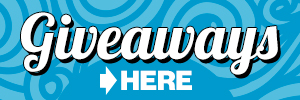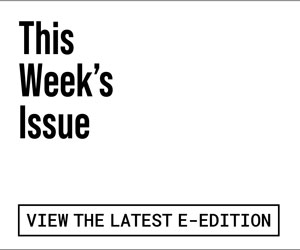It had never occurred to Aurore Sibley, a Capitola writer and musician, that the Wisconsin alternative weekly where her late father was arts and entertainment editor through most of the 1970s could be a topic for her to write about—let alone the subject of an entire book.
Then in August 2023 she visited former colleagues of her dad, Gary Peterson, and developed the kind of obsession that leads people to want to write and publish books, no matter how steep the climb.
The result is Sibley’s upcoming book—Some Things Don’t Burn, due out from Wisconsin Historical Society Press in fall 2026—about the founding of the Bugle American, an alternative weekly published from 1970 to 1978.
The 1970s were a period of social change and resulting tension. The Bugle offices were fire-bombed in February 1975, when five staff members were living upstairs from the newspaper offices and could easily have been killed. All five were able to escape “with nothing but their pajamas,” as Sibley puts it.
Sibley’s story of finding a book right under her nose can and should inspire others looking to make some small difference in a world tilting off its axis. Books, despite the romance to which some might wish to associate with them, are really just an expression of the personal journey of a writer.
For Sibley, also a practitioner of craniosacral therapy, and a single mother, this was a project that helped her get to know her father, who died in December 2011 after years of declining health.
“I wanted to hear stories about my dad during those times,” she says. “I started reaching out to former staff, and the more people I talked to the more I was referred to, and it snowballed from an article into a book. I was born in 1976, so a lot of the people I talked to remembered me as a baby. It was really cool to hear so many stories about my dad. One of the most striking things was how many people said, ‘Your dad was my mentor,’ or ‘Your dad was my sherpa.’ He really encouraged other writers and really helped them find their way, trusting new writers and new photographers with new assignments. So that was really fun to hear.”
Pathways to Publishing
The book publishing industry has gone through seismic shifts in recent years. In the 21 years since I published my own first book, One Day at Fenway, in August 2004, through the Atria imprint of Simon & Schuster, the New York publishing industry has less and less room for what are called midlist titles, namely, those unlikely to be runaway bestsellers.
Since then I’ve worked on more than twenty books, as author, coauthor, editor or publisher, including six New York Times bestsellers, and the conclusion I’ve come to is: Better to write books through authentic, quirky, unquenchable passion, better to make it a labor of love powered by a calling to tell a particular story, than to attempt to forge some writerly brand or career to meet the expectations of gatekeepers along the way.
In other words, if you’re inclined to doom scroll through tidbits of Advice for Writers or Tips to Have YOUR Book Bring You Fame and Glory, of even if you expect to make a living on writing, it might be a good idea to just chuck all those assumptions into the dumpster and reassess. Storytelling is for those who have to tell stories, who cannot live without the pursuit. The long slog of bringing a book along is for those who crave a glimpse of the underlying edifice of clarity that emerges when one can bring a narrative together on the page in a compelling and satisfying way.
A number of trends have converged to stifle the imagination required to take a bold approach to finding one’s own path, thinking of books in a fresh and fearless way. Not so long ago, many book authors had spent time as newspaper reporters and though they might have learned some bad habits along the way, they also often had some sense of the world as it actually is, out there in the streets, not just in a book or a classroom or a chatroom. Didion, Garcia Marquez, Twain–all nourished their writerly imaginations through reporting …
That, however, has become harder than ever. A number of trends have converged to stifle the imagination required to take a bold approach to finding one’s own path, thinking of books in a fresh and fearless way.
Here’s a bold proposition: For books to regain their role in the American collective imagination, regaining the moral leverage required to prod and encourage and inspire, we will need more of the do-it-yourself spirit of individual would-be writers daring to do it their way. I’m totally serious. So if you’re a writer or want to be a writer, come to our Wellstone Center in the Redwoods Author Talk Event this Saturday (details below), exploring different routes to publication.

Small Press, Big Response
Bay Area writer Samantha Schoech, one of our participants in the talk, has made a nice splash with her first book, a story collection with a grabber of a title—and cover: My Mother’s Boyfriends, which shows a black-and-white image of a man ogling the rear end of a woman who appears very much in color.
Schoech, formerly book editor of the San Francisco Chronicle and currently a staff writer for The New York Times’ Wirecutter section, spent years developing the idea of this particular collection, partly by writing stories and waiting to see if some of the stories told her they wanted to be bound together. (Some of the work on the book came in residence at the Wellstone Center in the Redwoods.)
It all started with Schoech’s first story in a major literary journal, “Sudden Fictions,” published in ZYZZYVA in 1997. She did not conceive that work as part of a larger collection, but over the years a vision slowly formed. “At some point, about five or six years ago, I realized I had enough stories that made sense together to start thinking about a collection,” Schoech says. “I have written many, many stories not in the book, but I started to see a thematic pattern emerge that I wanted to follow. The stories in this collection are very much about family connections, mothers and daughters, and people trying to navigate their own morality. I love otherwise good characters making questionable or even terrible moral decisions.”
Put another way, Schoech likes to make readers uncomfortable, but not too uncomfortable. It’s a balancing act, deciding how far to go. “Many of Schoech’s characters,” wrote Hannah Bae in a San Francisco Chronicle review, “lead lives that haven’t been burnished by privilege and are thus seldom depicted in literary fiction: They’re tenuously employed adjunct professors; divorcées trying, and not always succeeding, at doing their best in their personal lives; children living on the margins; and gravely injured high school teachers.”
It was hardly a given that the book could find a publisher, given its unwillingness to play by a neat set of rules. Schoech refers to her struggle to find a publisher as a “long, twisted tale full of woe,” though in the end the story had a happy outcome. “My agent wasn’t interested in trying to sell a book of short stories and so I didn’t even try to go to a ‘Big Five’ publisher,” she says. “I sent this manuscript out to university presses, and contests for about four years on my own.”
She was a runner-up for many prizes, important positive feedback in its way, but not the kind of validation that could help get the attention of a publisher. She persevered. “I entered a contest with 7.13 Press, a tiny, independent press in LA that specializes in debut fiction, and didn’t win,” she says. “But about a year later the publisher came back to me to say he hadn’t stopped thinking about my book and asked if it was still available. It was. The rest is small press history. It’s now one of their bestselling titles of all time and it’s only been out for a little over two months.”

Be Your Own Publisher
Another example of a writer with the conviction to find a path to publication is Helene Simkin Jara, a longtime resident of Santa Cruz, whose one major misstep as a writer, as she likes to tell it, was trusting her third-grade teacher in Maplewood, New Jersey. That was in the 1950s. The teacher, alas, was not properly impressed by the “book” young Helene shared.
Undaunted, she earned a degree in theater arts from UCLA in 1969, and spent some years posing nude as an artist model in LA and the Bay Area in the 1970s—a period she revisits with humor and candor in her 2022 collection Life on the Stand: Memoir of an Artist Model. She has been an active member of the Santa Cruz theater community for years, both as an actor and director, most notably for the annual 8 Tens @ 8 Festival.
Here’s what I find inspiring: A gifted writer and reader of her own work, Simkin Jara has had stories published in numerous outlets, including Catamaran and the Porter Gulch Review, but when it came time to find a publisher, she decided to go the do-it-yourself route and publish via the IngramSpark platform, listing her publisher as “Helene Simkin Jara.” She hired an editor, found a way to have superior cover design, and put out books that have the polish and loving attention of volumes put out by many large publishing houses.
“When I got my first short story published, I thought, ‘Really?’ and then I thought, ‘Maybe I will try to write more,’ and then I thought, ‘Maybe I’ll have a book in a bookstore someday,’” Simkin Jara says.
“So I did all the right things: I went to conferences, got my social media platform, and got summarily rejected by many agents and publishers. After that I thought, ‘I think I’m too old for this. I’m just going to self-publish and see what happens.’ I got editors and put a lot of stories together. I had been writing my memoir for several years as well. I thought, why not? My kids and my grandkids will see what a crazy mother and grandmother they have, which they probably already knew.”
The Power of Storytelling
Mark Nicholson, another local, is an executive coach in Silicon Valley who has been happily married for 35 years and watched after by two wonderful children. Cullen Scott (pen name) has a BSME and an MBA from Santa Clara University. His expertise spans biotech, satellites, mainframes, RFID, and fiber optics, and he is a listed inventor for several patents in the field of Radio Frequency Identification.
Cullen has been published in numerous technical magazines and journals. The Deep Sting Series is his first creative publication. “Along with having fun, I’m looking to test the limits of what future worlds might look like and what readers might believe.”
Nicholson does not consider himself a writer, per se, but when he had an idea for a techno thriller, he decided to pursue it—and published the novel STUNG: A Techno-Thriller, under the pseudonym Cullen Scott, that has found an enthusiastic local readership. How’s this for a setup? “To prevent the world from descending into the chaos of terrorism, scientists and governments devised a foolproof deterrent: if you cause a death, you too will die when your NAC, your neuro-activated chip, bursts inside your skull. Quick, painless, and simple—it works. Every time. No one now dares risk taking a life.”
Nicholson might have the perfect attitude for an author: He does not obsess over his sales rank at Amazon. In fact, he does not worry much about sales at all, that not being the goal of the project, and finds it kind of funny that the book has sold more than 1,000 copies with no publicity. “My wife kids me about it,” he says.
Steve Palopoli, during his many years as editor of Good Times, attended “Mary Shelley Month,” a fiction-writing lab, as we called it, at the Wellstone Center in the Redwoods, and launched a novel delving into an unnerving future world in which a near-solitary figure lives at a former Google building and tries to stay in contact with people who have drifted off into an odd state somewhere between sleep and death. The book, years in the making, has some of the imaginative inventiveness of Philip K. Dick, a Berkeley High grad, but Palopoli uses fiction to pose very contemporary questions.
All of these writers inspire me in different ways—and can inspire you as well.
Sometimes in a time of great confusion and unwelcome change, it’s best to start with small steps. I’d like to stand on its head the axiom that books as cultural artifacts are increasingly irrelevant in a popular culture in which short videos and short snippets of inflammatory text seem to drive most public attention, and seem to set the tone. How does one step away from all that? Word by word, sentence by sentence, paragraph by paragraph.
What if only books can save us? What if, in particular, the engine of fiction might be a uniquely appropriate tool in an era in which crude, mawkish fictions pushed on us from on high are grabbing an ever larger portion of the public consciousness?
Eight years and one month ago, in a Good Times cover essay, “Orwell in the Time of Trump,” I argued it was time to understand the essentially Orwellian character of Trumpism. Now I would argue: It’s time to create new Orwells and new Atwoods. Let’s get to work. It’s not going to be easy.The Wellstone Center in the Redwoods will host a free public discussion on how to find a publisher on Saturday, April 5, beginning at 3pm. Participants will include moderator Steve Kettmann and local authors Aurore Sibley, Helene Simkin Jara, Wallace Baine, Samantha Schoech and Steve Palopoli. Beverages and snacks will be available. The event is free and will be held at 858 Amigo Road, Soquel, but please RSVP at Sa***@we***************.org.














